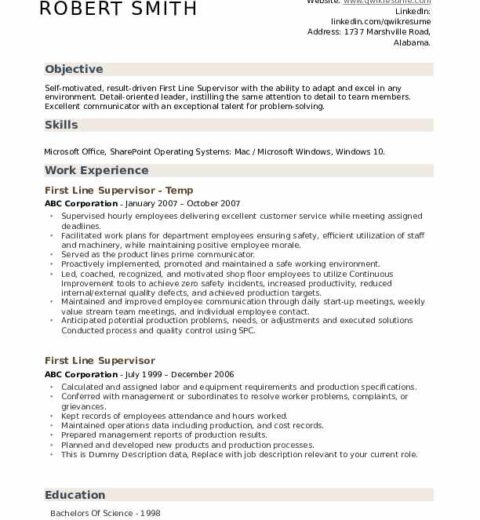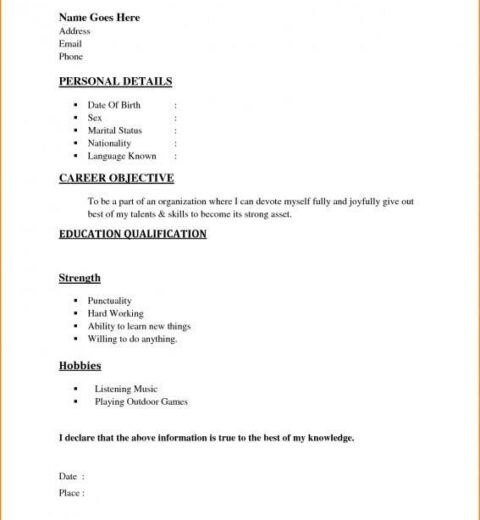Writing an effective resume is a meticulous task, and one of the most crucial components is succinctly articulating your skills. Tailoring the skills section of your resume to match the job description can significantly enhance your chances of securing an interview. A well-structured resume that effectively showcases your qualifications not only captures the attention of hiring managers but also clearly demonstrates your potential value to the organization.
First and foremost, it’s imperative to understand the specific requirements of the job you are applying for. Job postings often include a list of essential and preferred skills that candidates are expected to possess. A prudent approach is to review these skills meticulously, allowing you to identify keywords and phrases that resonate with your professional experience. By aligning your skills with those mentioned in the job description, you create a synergy that positions you as a suitable candidate.
One effective strategy is to employ a two-tiered approach in your skills section: hard skills and soft skills. Hard skills represent specific, quantifiable abilities acquired through education or experience, whereas soft skills encompass interpersonal attributes and emotional intelligence that facilitate interactions in the workplace.
Identifying Hard Skills
Hard skills can be categorized further into technical, analytical, and linguistic skills among others, depending on the industry. For instance, if you are applying for a position in information technology, your hard skills may include programming languages, software proficiency, and data analysis tools. If you are aiming for a role in healthcare, expertise in medical software or understanding of certain clinical procedures might be pivotal.
To effectively list these skills, consider using bullet points for clarity and ease of reading. For example:
- Proficient in Java, Python, and SQL programming languages
- Expertise in Salesforce and HubSpot CRM systems
- Advanced knowledge in data visualization tools like Tableau and Power BI
These targeted listings exhibit not only your competencies but also your commitment to meeting the expectations of the role.
Articulating Soft Skills
Soft skills, on the other hand, are sometimes overlooked but are equally important. Attributes such as leadership, teamwork, communication, problem-solving, and adaptability are often the differentiators between candidates with similar hard skills. In many cases, employers prioritize these qualities because they are indicative of how a candidate will fit into their corporate culture.
When detailing soft skills, it can be advantageous to provide contextual examples. Rather than stating, “strong communicator,” you might say, “adept at presenting complex information clearly, leading to a 25% improvement in team collaboration.” This not only asserts your possession of the skill but also illustrates its impact, which is a compelling aspect for hiring managers.
Tailoring Skills for Specific Jobs
To maintain relevancy, it’s essential to customize your resume for each job application. This entails closely examining the language and skills mentioned in the job posting. Use these keywords in your resume’s skills section to ensure compatibility and to evade automated screening systems commonly employed by employers. For instance, if the job ad emphasizes “project management” and “cross-functional collaboration,” ensure these terms are prominently featured in your skills list.
Another useful tip is to pay attention to the qualifications of individuals already in the role or similar positions. Online platforms like LinkedIn offer insights into what skills professionals have highlighted in their profiles that pertain to the job sector you are targeting. Observing commonalities can provide further clarity on what to focus on in your skills demonstration.
Prioritizing Key Skills
While it may be tempting to list every skill you possess, prioritization is essential. Aim for conciseness and relevance by featuring only those skills that are most pertinent to the position. A strategic way to do this is by creating a “skills matrix” whereby you rank your skills based on proficiency and relevance to the job. You could categorize into sections such as “Essential for the Role,” “Strong Proficiency,” and “Additional Competencies.”
Ultimately, the organization of the skills section should facilitate an effortless reading experience. This could mean placing the most relevant skills at the top, thereby ensuring they capture immediate attention. Resumes are often scanned quickly, so making a strong first impression is vital.
Using Action Verbs
To further enhance the appeal of your skills section, incorporate action verbs and descriptive language. Dynamic wording not only draws attention but also reflects an energetic and proactive attitude. Phrases such as “spearheaded the development of a new training program” or “championed a successful marketing campaign” showcase your initiative and leadership capabilities.
Continuous Refinement
Writing your skills section is not a one-time endeavor; it should evolve as your career progresses. Regularly update your resume to reflect new skills acquired through professional development, previous job experiences, and relevant training. This not only prepares you for future opportunities but also ensures that you remain competitive in a rapidly changing job market.
In conclusion, crafting a compelling skills section is a pivotal element of resume writing. By strategically identifying and articulating both hard and soft skills, tailoring them to the job at hand, prioritizing their presentation, and continuously refining your list, you significantly increase the likelihood of standing out in today’s competitive job landscape. An articulate resume that clearly delineates your skills encapsulates your professional identity and paves the path towards achieving your career aspirations.




